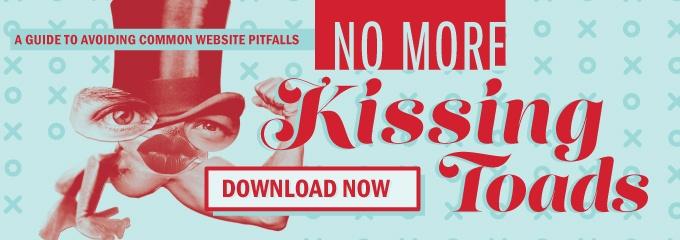 Web
Web
4 Rules to Talk About the Web With a Non-Tech Audience
I found a funny website the other day: HackerTyper.com.
With the stroke of any key automatically generates a string of complex code. Randomly hitting keys makes you look like you’re hacking away at some wildly elaborate piece of code.
While the site is just a joke, it’s also a subtle jab at how confusing and complex our jobs in the tech world appear to people who don’t understand what we do. A screen full of CSS code isn’t an indecipherable wash of letters and numbers — it’s the building blocks of a website. It just looks like Esperanto to someone who doesn’t know what the heck they’re looking at.
When you’re really familiar with something — anything, be it skateboarding, basket weaving or medieval history — you speak about it more eloquently and expertly than people unfamiliar to that subject would. It’s natural. So it can be super easy to talk over the heads of a non-tech audience who isn’t as well-versed as you about tech stuff, and that can make clients feel browbeaten and alienated.
If you’re talking about the web with a client that doesn’t quite understand what’s going on, here are four simple rules to follow:
Don’t Assume Anything
The best way to effectively communicate with someone who doesn’t understand is to let them steer the conversation. When you start talking about something complex, preface your conversation with a statement like, “Please stop me if I can explain anything for you.”
Unless your client explicitly says “I don’t understand,” assume they know what you’re talking about. Don’t start by explaining things they don’t understand, just dive right in and encourage them to put the brakes on the conversation if they’re lost. This prevents you from coming across as condescending when you explain how to do something they already know how to do.
Avoid Jargon
While you know what “CSS,” “syntax” and “CMS” mean, your client may not. This is not the time to flex your intellectual muscles and prove to your clients that you know what you’re talking about — it’s the time to explain things coherently.
Wipe out all of the tech talk from your dictionary, at least for the moment. And if you do drop an important acronym or phrase, take the time to rewind a little and explain what it means before going further.
Be a Walkie-Talkie, not a Radio
In order to be a great communicator, you have to be a great listener. Don’t just pontificate, absorb what others in the room have to say. Keep your message fluid instead of one track. When they speak, pay attention rather than focusing on what you’re going to say next.
Be a walkie-talkie to your audience, not a radio. Say something, ask for feedback, respond to that simply and clearly, and keep going.
Start with the Results
Everyone’s looking for a solution to their problem. No one comes to a web design agency with all the solutions. That’s what we’re here for.
Your knowledge is a solution to your client’s problem, and they want to see it fixed — and fast. Solve the problem, then detail what you did, how it could be prevented from happening, or what needs to be resolved first.
Photo courtesy wetwebwork


